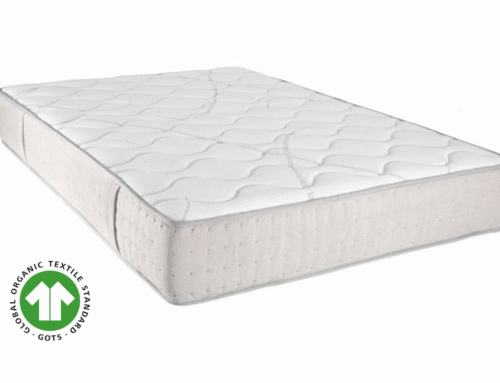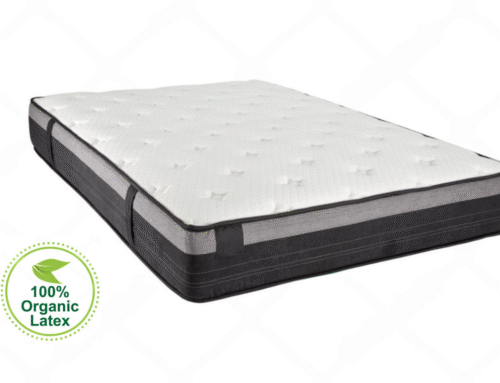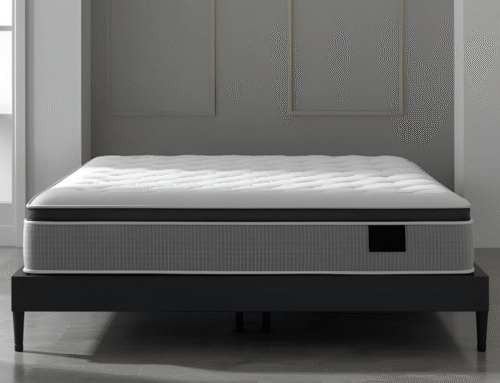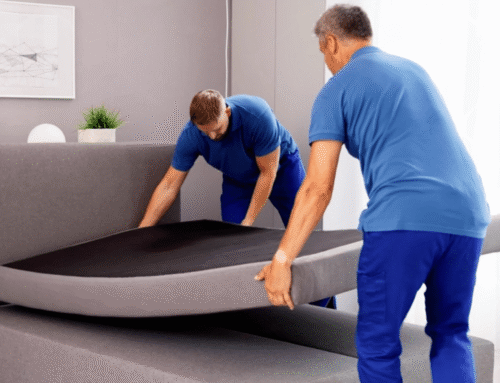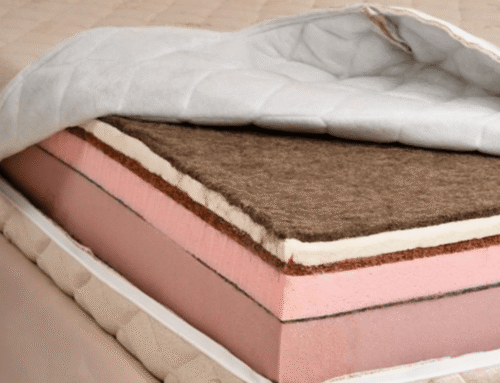Latex mattresses feel springy and quick to respond. If you move around a lot at night, this makes it easier to switch positions without feeling stuck. They also tend to stay cooler because air flows more easily through the material. Many people like that latex gives support without trapping heat. The catch is, it usually costs more than other mattress types.
Memory foam, on the other hand, molds closely to the body. It’s good for easing pressure, especially for side sleepers who often feel pain in their hips or shoulders. The drawback is heat because traditional memory foam can get warm. Newer versions with cooling gels or open-cell designs have helped improve airflow, but it’s still something to consider.
Both have clear strengths, so it really depends on your needs and budget. Latex feels lighter and more buoyant, while memory foam gives a deeper, hugged-in feeling. If you’re deciding between the two, think about how you sleep, how much you want to spend, and whether you prefer a cooler or more body-contouring surface.
Key Takeaways
- Latex mattresses are springy and don’t trap heat, which makes them good for people who move around a lot at night.
- Memory foam molds to your body and eases pressure, which helps side sleepers with sore hips or shoulders.
- Latex usually stays cooler on its own. Memory foam can get warm unless it has cooling gel or special airflow designs.
- People who care about the environment like latex because it’s natural, breaks down over time, and doesn’t have strong chemical smells like some foams.
- Latex lasts a long time, often up to 20 years. Memory foam tends to wear out in about 7–10 years.
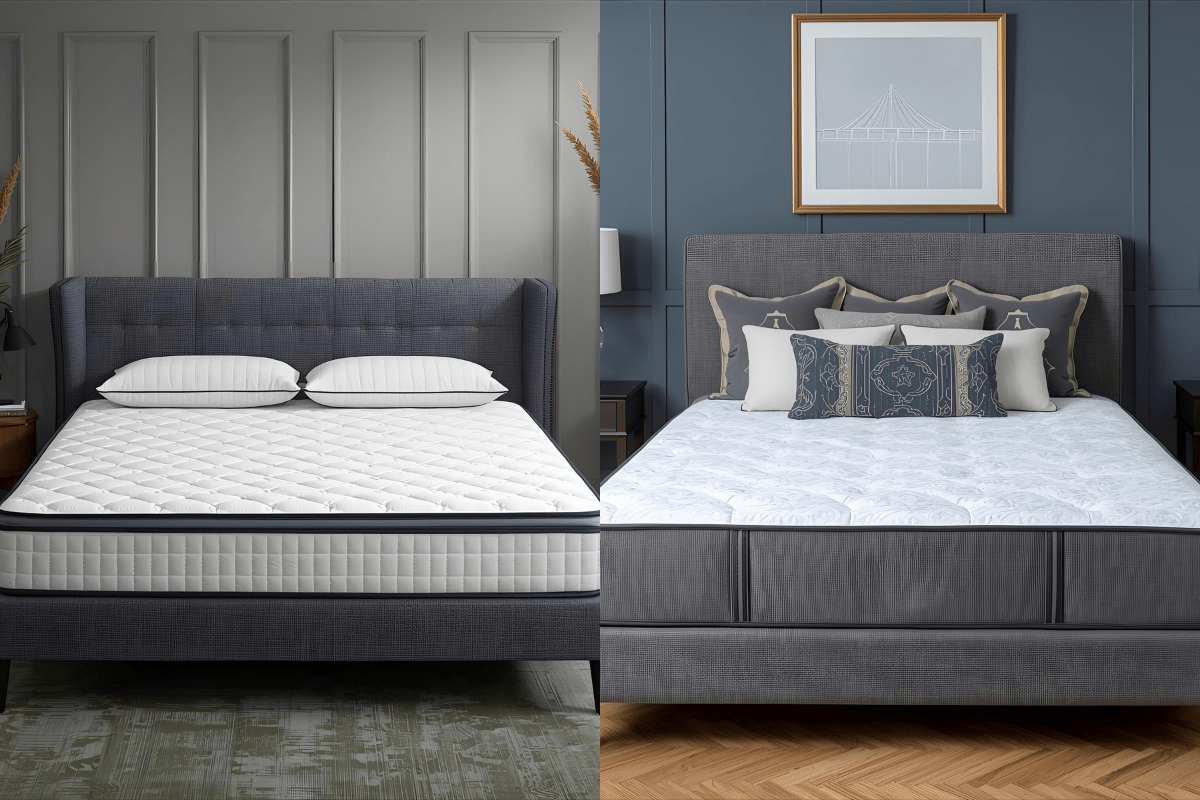
Comfort Level
For those considering adjustments to enhance comfort or choosing the right mattress thickness and benefits, knowing how to make a latex mattress softer helps. Latex mattresses feel springy and firm but give buoyant support. The surface floats the body, rather than sinking in, so one remains upright on the mattress. Latex mattresses are ideal for individuals who change positions during the night.
Memory foam mattresses are hugging and softer, which gradually mold into the body. The foam fits very tightly, providing pressure relief and a cozy, close feeling of sinking. Side sleepers love this amount of softness as it relieves pressure from shoulders and hips.
Both are soothing, but the experience varies to individual taste. Latex is all about freedom of movement and lifted feel, while memory foam is all about profound contours and body cradling. The distinction is whether one likes to sleep “on” the bed or sink gently “into” the bed.
Pressure Relief
Memory foam is also said to provide relief for pressure on sensitive areas of the hips, shoulders, and joints. The foam conforms to the body very closely, and this may be especially helpful for those with chronic pain or who need additional support in certain parts of the body. A few sleepers appreciate that it cradles softly without creating gaps.
Latex provides a different kind of relief. It still relieves pressure points, but it is more springy in feel and keeps the body in a higher position rather than sinking down. That fine balance between cushion and support seems to suit those who have lower back pain or prefer a surface that is somewhat more responsive.
Both are effective in pressure relief, but the choice is largely dependent on personal comfort requirements. If people want deep contouring, they tend to favor memory foam, and if they want soft support with added support, latex would be more comfortable for them.
Responsiveness
Latex also responds quickly when under stress, springing back within a few seconds. Such responsiveness provides ease of movement, thus changing positions while sleeping or getting out of bed feels easy and smooth. Most sleepers state that the surface is lively and responsive but not tacky.
Memory foam reacts slightly differently, as it retains the shape of the body for a few seconds before gradually returning to its shape. Some prefer the contouring as it is as if being hugged by the mattress, but some might find the delayed reaction somewhat restrictive. The sensation is mostly a matter of sleeping style and preference.
For individuals who prioritize freedom of movement, latex will create a more yielding feel. It responds rapidly to changes in weight and position, providing a lighter feel. Memory foam, conversely, creates a firmer hug with less spring-back, which may be preferable for sleepers prioritizing pressure relief over rapid responsiveness.

Motion Isolation
Memory foam mattresses are famous for having a very good motion-absorbing property. An agitated sleeper can toss, turn, or even climb in and out of bed without disturbing the individual beside him or her. For couples, this usually translates to fewer disruptions during their sleep and a better night’s sleep overall.
Latex mattresses also transfer motion relatively well, although they can have a more lively feel. The small amount of bounce results in smaller movements being able to travel on the surface, so partners will become aware of each other moving around during the night. Nevertheless, latex counteracts this with comfort and support that most people appreciate.
For individuals who wake up easily by movement, memory foam typically provides the best option. Its structure reduces disturbances, making it possible for both sleeping partners to sleep uninterrupted. Couples that prioritize motion isolation over all else find memory foam to be the better option for shared sleep.
Temperature Regulation
Latex mattresses tend to offer a cooler sleeping surface. Natural latex consists of a breathable architecture that enables consistent airflow, which works to inhibit heat buildup at night. Most designs also include pinholes or open-cell construction that further enhances ventilation.
Memory foam, on the contrary, is famous for retaining heat. Classic models tend to become warm because the compact foam retains body heat. Even newer versions incorporate cooling gels or open-cell technology, yet they remain warmer than latex.
For individuals who tend to wake up drenched in sweat, latex provides a fresher alternative. The natural ventilation due to its ventilated design, paired with its breathability, makes it a dependable selection for cooler sleeping. Memory foam can work for some sleepers, but latex is still the better option for individuals who want to stay cool.
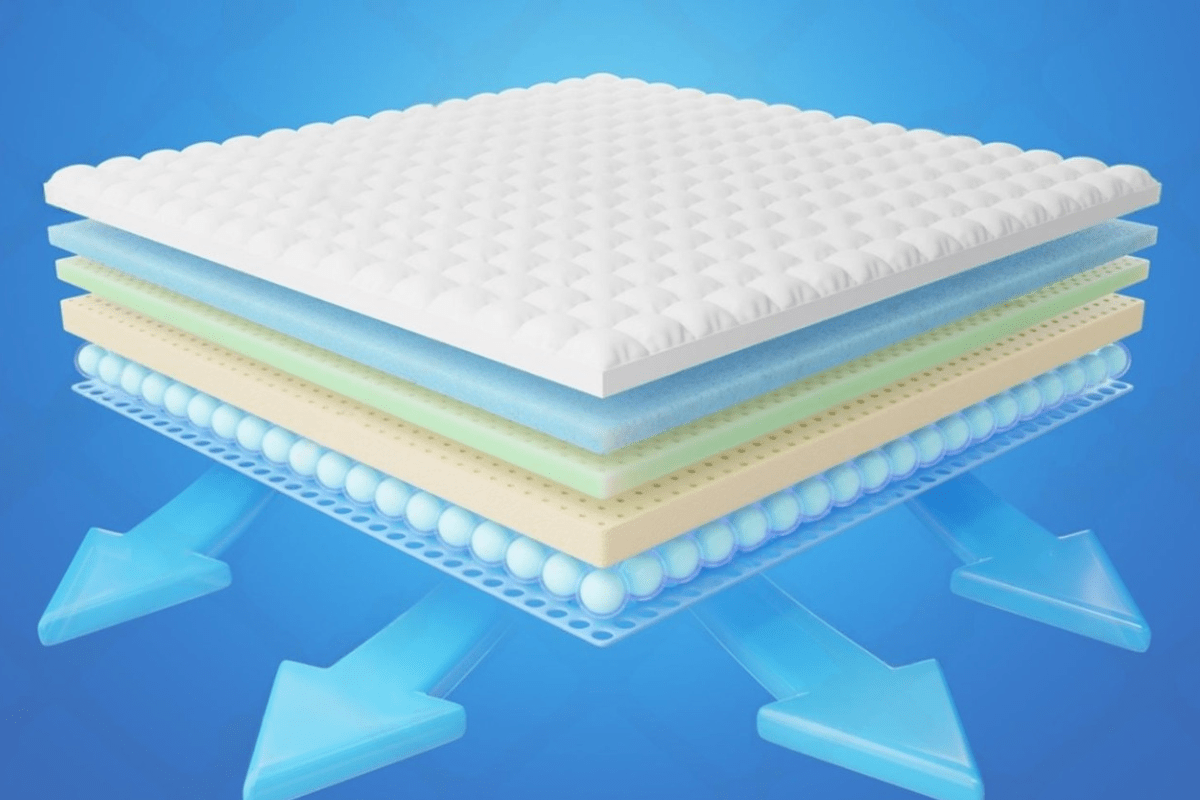
Eco-Friendliness & Materials
Latex mattresses are derived from natural rubber tree sap, which is biodegradable and renewable. Most value the fact that certified versions, such as those with GOLS or OEKO-TEX certifications, utilize less toxic chemicals. This provides a greener option than other beds.
Memory foam, however, is made using man-made materials like polyurethane. Although some are CertiPUR-US certified to restrict chemical off-gassing, they are still predominantly made of man-made materials. This implies they lack the same natural attributes that are found in latex.
For consumers who value green living, latex is generally the more environmentally friendly option. It is comfortable and more in line with environmental ideals, while memory foam goes towards economy and ubiquity instead of green design.
Off-Gassing
Getting rid of a latex mattress smell is easier compared to memory foam, and it directly affects comfort level and overall sleep experience. A fresh memory foam mattress will have a strong odor that lasts for days. It is caused by volatile organic compounds, or VOCs, that the mattress emits as it expands. While the smell usually fades away, some people find it disturbing or unpleasant, especially in small rooms.
Latex beds, particularly those that are built with natural or organic latex, carry a far lesser odor. This will typically be the earthy or rubber smell variety, and it does dry out quite quickly. To a person who is chemically sensitive, this is a much better option.
The odor difference between latex and memory foam will usually influence the decision of what people opt for. Memory foam will remain appealing to others because of its contouring support, but it has a pungent chemical smell. For households who desire a cleaner, natural sleeping place, latex is the better choice.
Durability
Latex mattresses are some of the longest-lived on the market, usually remaining supportive between 12 to 20 years. Natural latex, in specific, resists sagging well and retains its shape even after extensive use, which is why some find it a good investment. Regular care, such as mattress rotation, can also prolong its lifespan.
Memory foam generally lasts for about 7 to 10 years before it starts to break down. Poorer-quality models will break down faster, particularly in the top comfort layers where the bulk of the pressure will be concentrated. This will result in poor support and discomfort over a period of time.
For somebody who desires a bed made to last, latex definitely remains superior in longevity to memory foam. Although memory foam can continue to provide reasonable comfort, it generally won’t be equal to the endurance or lifespan of latex. In the end, what kind of material is used depends largely on how long a mattress will remain comfortable and supportive.
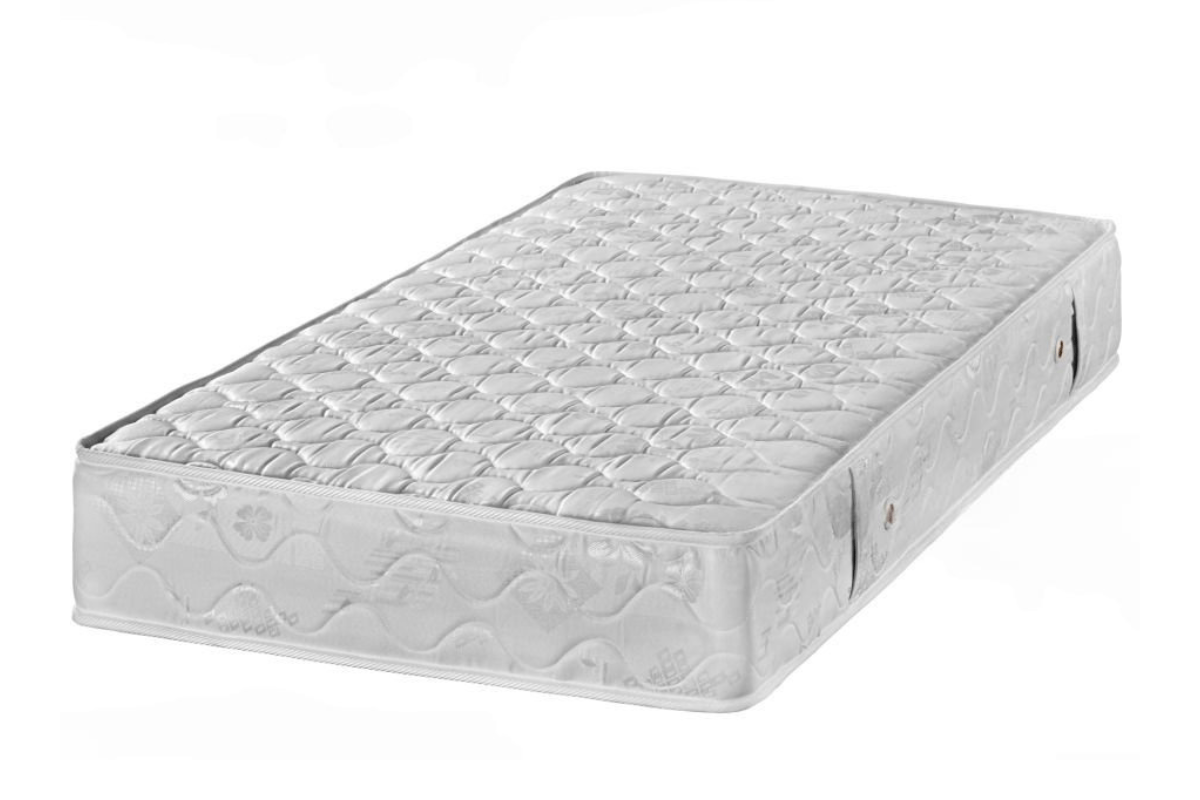
Pros and Cons
When considering the comfort level of latex and memory foam mattresses, it’s also important to think about practical handling, storage, and maintenance, as these factors can affect the overall sleeping experience, ease of repositioning, and long-term usability, so storing a latex mattress, moving, knowing how much it weighs, cleaning it, and cutting it are all important in managing comfort and convenience.
Latex mattresses are usually prized for being durable because they can last for years without quickly sagging. They are also cooler to sleep on at night than other foams, which is a huge boon for warm sleepers. For environmentally friendly products, natural or organic latex is a sustainable choice and still keeps up with being supportive and responsive.
Downside is that latex typically has a greater price than other mattresses and has a weight that makes it more difficult to shift around. Latex also transfers some motion, albeit not as much as with regular spring mattresses. These things might not disturb everyone, but they can be a nuisance for those who constantly change position or have a bed partner.
Memory foam mattresses also have their own draw with great pressure relief that is effective at easing achy areas after long days. They also isolate motion really well, which many couples appreciate, and the price points have more affordable options. The downsides are retaining more heat, a shorter lifespan than latex, and a slower response feeling that makes repositioning less fluid, particularly together with an initial off-gassing smell.
Final Thoughts
A latex mattress provides a naturally cooler night’s sleep and a lively and responsive feel that will last for decades. Its eco-friendly materials appeal to consumers who care about sustainability without sacrificing support. Those who have a restless sleeping pattern and toss and turn throughout the night might find its bounce especially helpful.
Memory foam provides deep contours that cradle and absorb pressure points extremely well. It also limits transfer of movement, which can be useful for couples who share a bed. Softness and hugging feel are appealing to consumers who prefer a more enveloping sleeping sensation.
Both mattresses have both their merits and appeal to personal preferences. Their durability, heat maintenance, and body support are all material-dependent. Ultimately, personal comfort and sleeping habits decide which is best in the long term.

